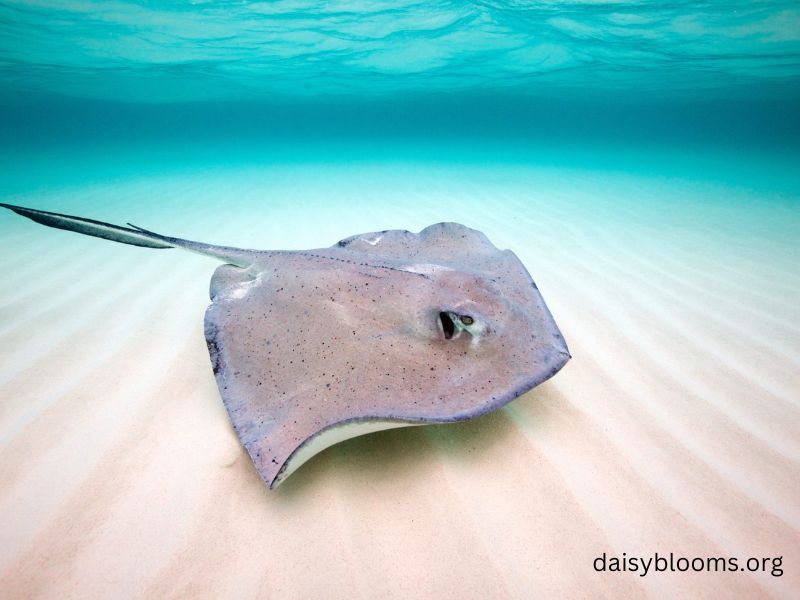Lobster traps, a staple in the fishing industry, are essential tools used by fishermen to capture lobsters from the ocean. However, over time, it has become increasingly common for these traps to unintentionally catch a variety of marine creatures, one of which is the stingray. The presence of stingrays in lobster traps raises important questions about the impact of fishing practices on marine ecosystems, the potential risks to stingrays, and the broader environmental implications. This article explores the phenomenon of stingrays caught in lobster traps, its causes, consequences, and potential solutions.
What Are Lobster Traps?
Before delving into the issue of stingrays caught in lobster traps, it is essential to understand what lobster traps are and how they work. Lobster traps, also known as lobster pots, are specially designed cages used to trap lobsters for commercial and recreational fishing. These traps are typically made of durable materials like wood, wire, or metal and are baited to lure lobsters inside.
Lobster traps are strategically placed on the ocean floor, often in areas where lobsters are known to inhabit. The traps are designed to allow lobsters to enter, but once inside, they are unable to escape. While these traps are highly effective at capturing lobsters, they are not selective in the creatures they catch. As a result, other marine animals, including stingrays, can get caught in these traps.
Why Are Stingrays Getting Caught in Lobster Traps?
Stingrays are commonly found in coastal and shallow waters, where they feed on a variety of small marine organisms like crustaceans, mollusks, and small fish. These areas also happen to be prime locations for lobster traps, which means that stingrays and lobsters often share the same habitat. The issue arises when stingrays accidentally swim into the lobster traps, attracted by the bait or the structure of the traps themselves.
Lobster traps are not designed to be selective in what they catch. While they are effective for lobsters, other species, including stingrays, can become entangled in the traps. Once inside, the stingrays are unable to escape due to the narrow openings and confined spaces. Additionally, lobster traps are often left on the ocean floor for extended periods, increasing the likelihood of non-target species, such as stingrays, being caught.
Environmental Impact of Stingrays in Lobster Traps
The unintended capture of stingrays in lobster traps raises several environmental concerns. First, it highlights the lack of selectivity in traditional fishing methods. Many fishing practices, including lobster trapping, are not designed with bycatch (the capture of non-target species) in mind. Bycatch can have detrimental effects on marine ecosystems, as it leads to the unnecessary capture and often death of non-target species.
In the case of stingrays, being caught in lobster traps can result in injury or death. Stingrays are sensitive creatures that rely on their ability to swim freely in order to find food and avoid predators. When trapped, they may experience stress, injury, or even death from entanglement. Additionally, the trapped stingrays may not be able to return to their natural habitat, disrupting the balance of the local ecosystem.
Another significant concern is the potential impact on stingray populations. Some species of stingrays are already vulnerable due to habitat loss, overfishing, and environmental changes. The accidental capture of stingrays in lobster traps may exacerbate these challenges, further threatening their populations and disrupting the health of marine ecosystems.
Solutions to Reduce Stingray Bycatch in Lobster Traps
Given the environmental concerns associated with stingray bycatch in lobster traps, it is essential to explore solutions that can minimize or eliminate this issue. Several approaches can be considered to reduce the unintended capture of stingrays and other non-target species in lobster traps.
- Bycatch Reduction Devices (BRDs)
One potential solution to reduce stingray bycatch is the implementation of bycatch reduction devices (BRDs). These devices are designed to allow non-target species to escape from traps or fishing nets while still allowing the targeted species, such as lobsters, to be captured. BRDs can be installed in lobster traps to create larger escape openings or modify the structure of the trap, making it easier for stingrays and other non-target species to avoid entanglement. - Trap Modifications
Another solution is to modify the design of lobster traps to make them more selective. For example, creating traps with different sizes of openings or specific trap features could help prevent stingrays from entering while still allowing lobsters to be captured. These modifications would require careful research and testing to ensure that they are effective at reducing bycatch without compromising the trap’s ability to capture lobsters. - Increased Monitoring and Reporting
Better monitoring and reporting of bycatch incidents can help researchers and regulators understand the extent of the problem. Fishermen can be encouraged to report any instances of stingrays or other non-target species being caught in their lobster traps. This data can be used to assess the impact of lobster trapping on stingray populations and develop targeted conservation strategies. - Fishermen Education and Training
Education and training for fishermen can also play a crucial role in reducing stingray bycatch. Fishermen can be taught to recognize when a stingray has been caught in their trap and how to safely release the animal back into the ocean. Training programs can also raise awareness about the importance of minimizing bycatch and protecting marine biodiversity. - Alternative Fishing Methods
In some cases, alternative fishing methods could be explored as a way to reduce bycatch. For example, trap-free methods such as line fishing or trawling may be less likely to capture non-target species like stingrays. While these methods may not be feasible for all types of fishing operations, they could be a potential solution for reducing the unintended capture of marine life.
The Role of Regulations and Sustainable Fishing Practices
To address the issue of stingrays caught in lobster traps, regulations play a critical role in shaping sustainable fishing practices. Governments and environmental organizations can introduce laws and guidelines that encourage the use of bycatch reduction technologies, trap modifications, and responsible fishing practices. These regulations can help ensure that lobster fishing operations are more environmentally friendly and that non-target species, such as stingrays, are better protected.
Sustainable fishing practices can also promote the long-term health of marine ecosystems. By reducing the impact of fishing activities on non-target species and their habitats, it is possible to maintain balanced ecosystems that support biodiversity. Fishermen who adopt sustainable practices can help protect marine life while continuing to support the lobster fishing industry.
Conclusion
The accidental capture of stingrays in lobster traps is an issue that highlights the challenges of balancing commercial fishing with marine conservation. While lobster traps are effective tools for capturing lobsters, they can unintentionally catch a variety of marine creatures, including stingrays. The environmental consequences of this bycatch are significant, as it can harm stingray populations and disrupt marine ecosystems.
However, there are solutions available to reduce stingray bycatch, including bycatch reduction devices, trap modifications, better monitoring, and increased education for fishermen. By adopting sustainable fishing practices and promoting responsible fishing methods, it is possible to minimize the negative impact of lobster trapping on marine life and support the long-term health of the ocean’s ecosystems.
By addressing the issue of stingrays caught in lobster traps, the fishing industry can become more environmentally conscious and contribute to the preservation of marine biodiversity for future generations.


